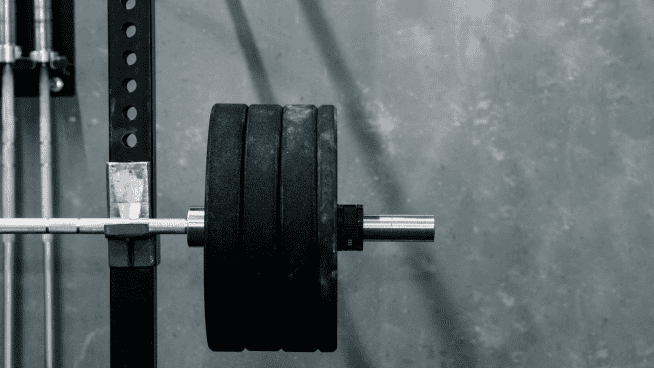How to Think Like a SEAL
U.S. Navy SEALs undergo some of the most brutal training on earth, often performing hours of demanding exercise while cold, wet, and sleep-deprived. To survive, they must develop world-class mental toughness. The mental tricks they use to persevere and succeed in their training can help you perform better at your sport. Here’s how.
Hit the Dirt
Before every mission, SEAL teams perform a “dirt dive,” where they mentally walk through the mission. Soldiers go over every step of the plan, discussing potential outcomes and developing fallbacks. “It’s like drawing up plays in the dirt,” says former SEAL Lt. Stew Smith.
This technique is smart, and backed by science. “By mentally rehearsing for an event, you can prime your muscle memory,” explains sport performance expert Dr. Chris Stankovich. “When you see yourself doing something successfully, you strengthen neural connections in the brain, which allows for faster reactions.” Athletes can do dirt dives before games by imagining the way things will look, feel and smell when they’re winning. That way, when the whistle blows, they’ll be better prepared to make it happen.
Name It, Then Tame It
Only optimists survive SEAL training, according to Smith. “When you let negativity in, that’s when it starts sucking,” he says. To stay positive, Smith recommends the “Name It and Tame It” trick. He says, “Next time a negative thought pops into your head, give it a silly name, like ‘Twinkle Toes.’ Then tell yourself, ‘I can’t think about Twinkle Toes anymore.’ Naming a thought takes away its power.”
Stankovich uses a similar approach with his athletes. “I have them write down things that stress them out, then crinkle up the paper and throw it away,” he says. “I want to show them that they have control over the situation.”
Set Small Goals
Before they can become SEALs, recruits have to survive Hell Week, 132 hours of physical and mental torture. To conquer the ordeal, Smith focused on making it to the next meal, always less than six hours away. “By turning a 132-hour week into 22 6-hour events, the whole thing became a lot less daunting,” he says.
Similarly, Stankovich helps athletes turn big, scary goals (such as being named All-State) into mid-term (get stronger), short-term (bench 280 pounds by summer) and daily goals (pump out one more rep on the heavy set).
Always Compete
Smith’s other secret for making it as a SEAL? Training to compete, not just survive. “I was always racing the guy next to me,” he says. “If you’re trying to win something, you don’t think about quitting. The guys who think about quitting will typically quit.”
Stankovich agrees. “Events and tasks aren’t good or bad by themselves. If you’re asked to do 20 Push-Ups, you decide whether it will be a challenge or a threat. Successful people train themselves to look at things as challenges, not threats.” Once you’ve decided to take on a challenge, aim to win it.
RECOMMENDED FOR YOU
MOST POPULAR
How to Think Like a SEAL
U.S. Navy SEALs undergo some of the most brutal training on earth, often performing hours of demanding exercise while cold, wet, and sleep-deprived. To survive, they must develop world-class mental toughness. The mental tricks they use to persevere and succeed in their training can help you perform better at your sport. Here’s how.
Hit the Dirt
Before every mission, SEAL teams perform a “dirt dive,” where they mentally walk through the mission. Soldiers go over every step of the plan, discussing potential outcomes and developing fallbacks. “It’s like drawing up plays in the dirt,” says former SEAL Lt. Stew Smith.
This technique is smart, and backed by science. “By mentally rehearsing for an event, you can prime your muscle memory,” explains sport performance expert Dr. Chris Stankovich. “When you see yourself doing something successfully, you strengthen neural connections in the brain, which allows for faster reactions.” Athletes can do dirt dives before games by imagining the way things will look, feel and smell when they’re winning. That way, when the whistle blows, they’ll be better prepared to make it happen.
Name It, Then Tame It
Only optimists survive SEAL training, according to Smith. “When you let negativity in, that’s when it starts sucking,” he says. To stay positive, Smith recommends the “Name It and Tame It” trick. He says, “Next time a negative thought pops into your head, give it a silly name, like ‘Twinkle Toes.’ Then tell yourself, ‘I can’t think about Twinkle Toes anymore.’ Naming a thought takes away its power.”
Stankovich uses a similar approach with his athletes. “I have them write down things that stress them out, then crinkle up the paper and throw it away,” he says. “I want to show them that they have control over the situation.”
Set Small Goals
Before they can become SEALs, recruits have to survive Hell Week, 132 hours of physical and mental torture. To conquer the ordeal, Smith focused on making it to the next meal, always less than six hours away. “By turning a 132-hour week into 22 6-hour events, the whole thing became a lot less daunting,” he says.
Similarly, Stankovich helps athletes turn big, scary goals (such as being named All-State) into mid-term (get stronger), short-term (bench 280 pounds by summer) and daily goals (pump out one more rep on the heavy set).
Always Compete
Smith’s other secret for making it as a SEAL? Training to compete, not just survive. “I was always racing the guy next to me,” he says. “If you’re trying to win something, you don’t think about quitting. The guys who think about quitting will typically quit.”
Stankovich agrees. “Events and tasks aren’t good or bad by themselves. If you’re asked to do 20 Push-Ups, you decide whether it will be a challenge or a threat. Successful people train themselves to look at things as challenges, not threats.” Once you’ve decided to take on a challenge, aim to win it.












